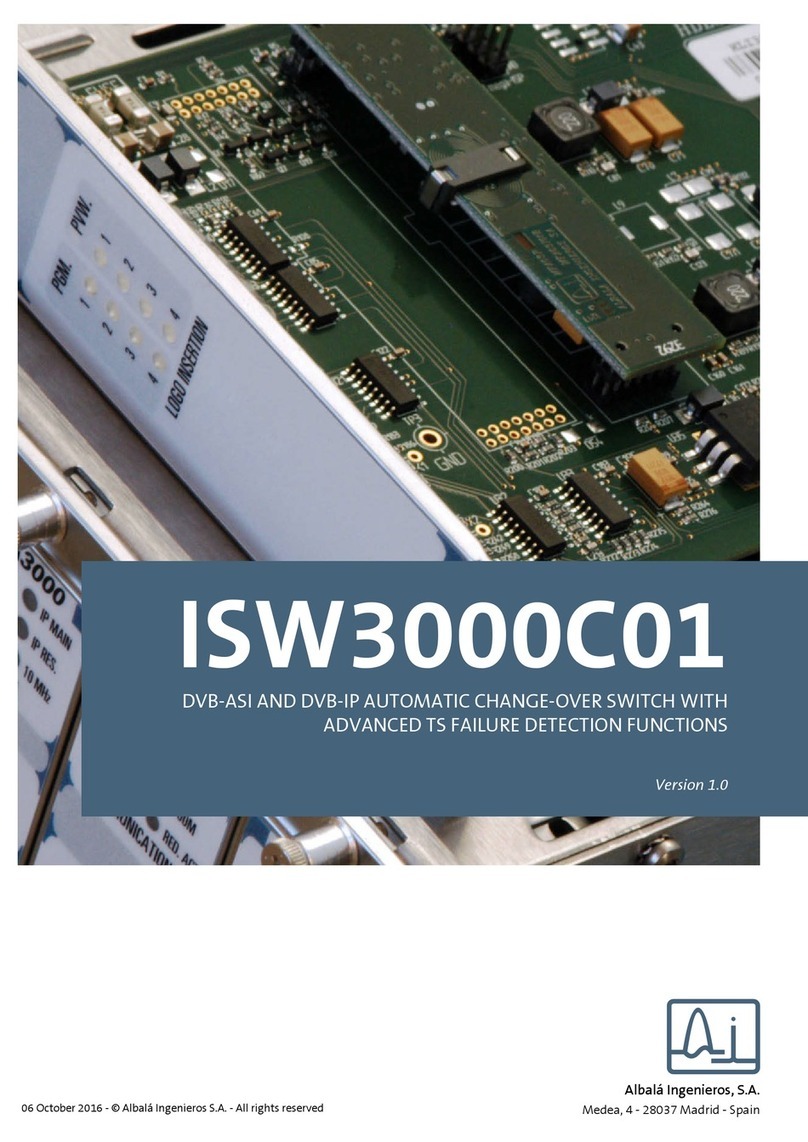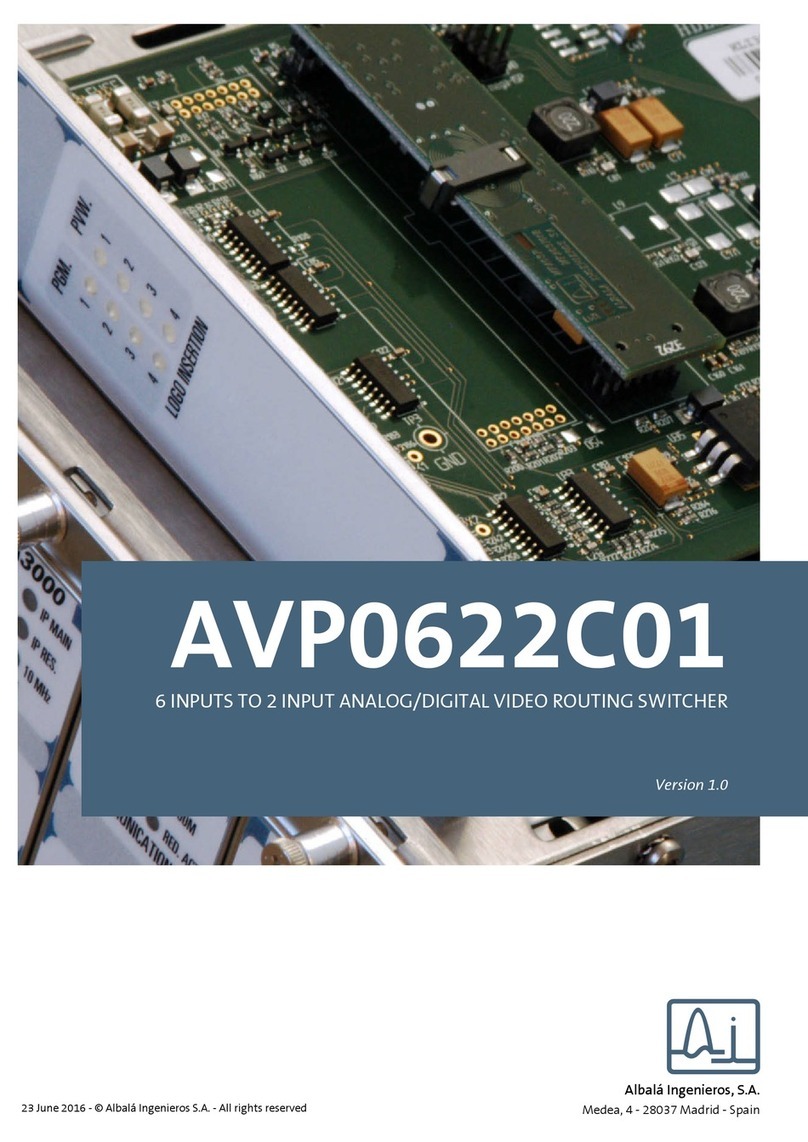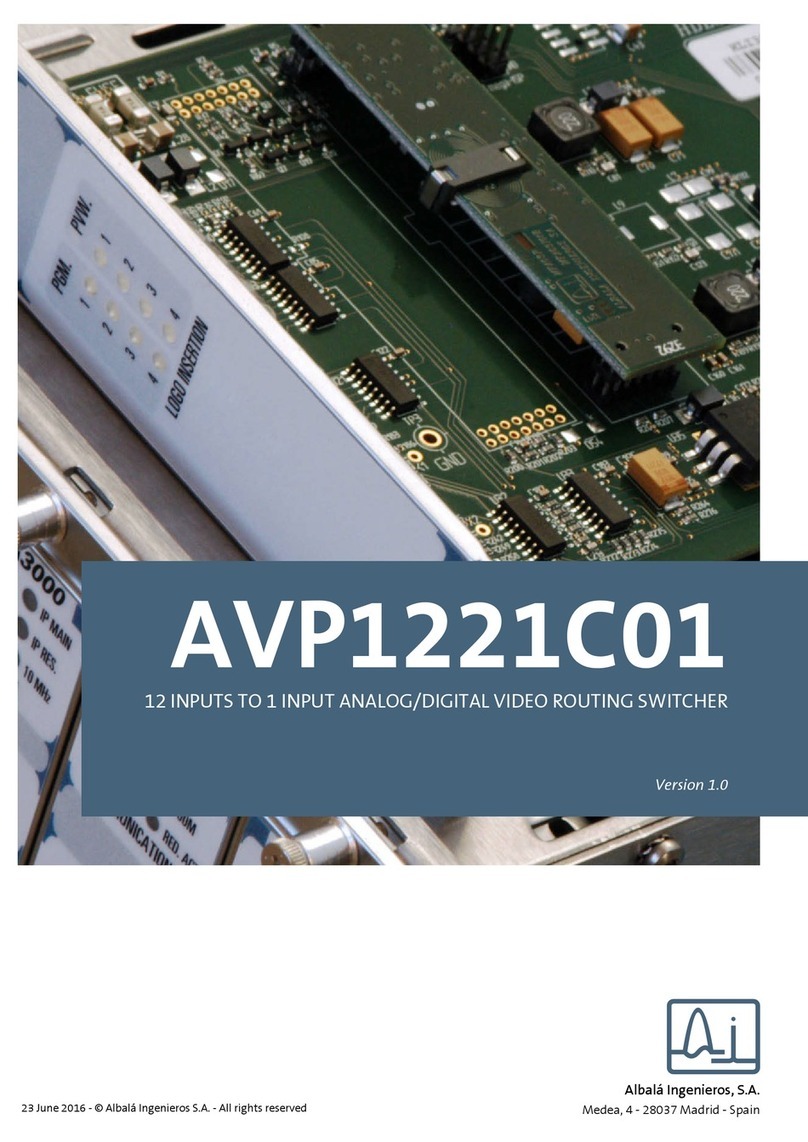
ASW3000C01
DVB-ASI AUTOMATIC CHANGE-OVER SWITCH WITH ADVANCED TS FAILURE
DETECTION FUNCTIONS
Version 1.0
1. DESCRIPTION ...................................................................................................................... 5
1.1. The ASW3000C01 .......................................................................................................................... 5
1.2. Features ............................................................................................................................................. 7
1.3. Block diagram .................................................................................................................................. 8
2. SPECIFICATIONS ................................................................................................................. 9
3. INSTALLATION .................................................................................................................. 11
3.1. Initial inspection .......................................................................................................................... 11
3.2. Safety instructions ...................................................................................................................... 11
3.3. Environmental considerations ................................................................................................ 12
3.4. Power considerations ................................................................................................................. 12
3.5. Installing the module in the mounting frame ................................................................... 12
3.6. Interconnection ............................................................................................................................ 14
3.6.1. Electrical DVB-ASI video connections .......................................................................... 15
3.6.2. GPIO connections ................................................................................................................ 15
4. OPERATION ...................................................................................................................... 17
4.1. Front panel description .............................................................................................................. 17
4.2. Configuration from the front panel ...................................................................................... 18
4.3. Functional description ............................................................................................................... 18
4.3.1. The error conditions ........................................................................................................... 19
4.3.1.1. GPI input ........................................................................................................................ 19
4.3.1.2. Absence of input signal. ........................................................................................... 19
4.3.1.3. Loss of synchronization of the transport stream. ........................................... 19
4.3.1.4. Error in the sync byte of the packets ................................................................... 20
4.3.1.5. PAT errors ...................................................................................................................... 20
4.3.1.6. Continuity error in the PAT packets. .................................................................... 20
4.3.1.7. Useful load of the transport stream .................................................................... 21
4.3.1.8. A percentage of null packets above or below set thresholds ..................... 21
4.4. Operating modes ......................................................................................................................... 21
4.4.1. Automatic Mode operation ............................................................................................. 21
4.4.2. Semiautomatic Mode operation ................................................................................... 22
4.4.3. Manual Mode operation ................................................................................................... 22


































